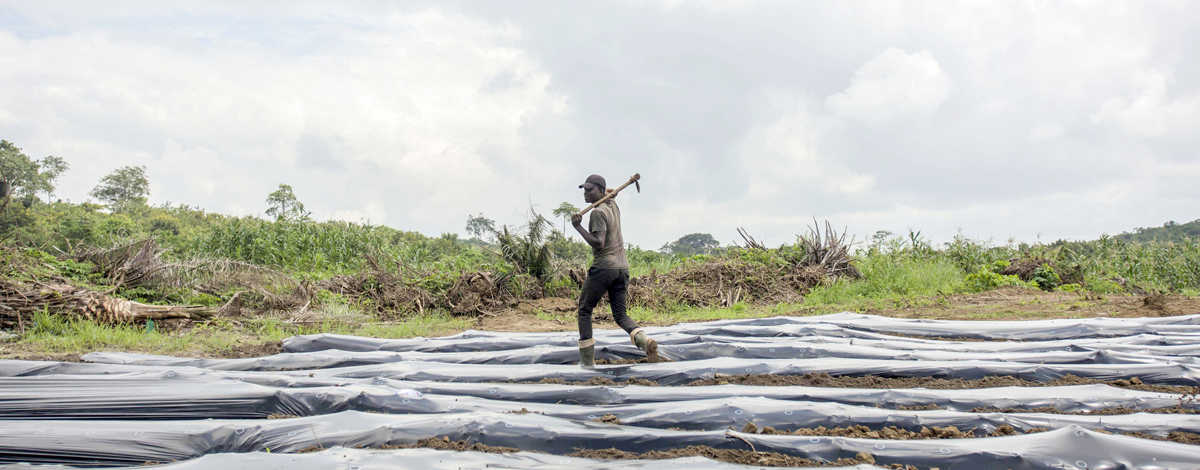Bridging health and climate: Why COP 29 needs the One Health approach

As the world faces the twin crises of climate change and global health challenges, the importance of the One Health approach has never been clearer. This framework, which integrates the health of humans, animals, plants and the environment, offers a transformative way to tackle the cascading risks intensified by climate change. At COP 29 on climate change in Baku, Azerbaijan, the One Health agenda provides a critical opportunity to align global climate policies with health and sustainability objectives.
Climate change and the health crisis
Climate change is a driver of biodiversity loss, ecosystem disruption, and the spread of zoonotic diseases, amplifying the risks of pandemics, antimicrobial resistance (AMR), and food insecurity. Rising temperatures alter the geographic range of disease vectors like mosquitoes and ticks, increasing the prevalence of diseases such as malaria, dengue, and Lyme disease. Similarly, changes in agricultural practices, deforestation, and wildlife exploitation disrupt ecosystems, creating fertile ground for zoonotic spillovers.
Mitigating these risks requires a comprehensive approach that recognizes the interdependence of environmental, animal, and human health systems. This is where the One Health framework is essential, offering solutions that bridge these domains.
One Health at COP 29
At COP 29, a high-level roundtable on One Health spotlighted its critical role in building resilience to climate-related health risks. Hosted by global leaders, including the Quadripartite collaboration (FAO, WHO, WOAH, UNEP), the session will emphasize the urgency of integrating One Health principles into climate and health policy frameworks.
Key discussions focused on:
- Raising awareness for policymakers on how One Health can address interconnected challenges like zoonotic diseases, food insecurity, and biodiversity loss.
- Encouraging cross-sectoral partnerships to unify health, agriculture, and environmental strategies.
- Advocating for the inclusion of One Health in national and global climate action plans.
Azerbaijan’s model for One Health
Azerbaijan's National Strategy for Strengthening Zoonotic Diseases Prevention and Control (2025–2030) exemplifies a One Health approach by fostering integrated efforts across the human, animal, and environmental health sectors. This strategy addresses zoonotic diseases—those transmissible between animals and humans—through coordinated surveillance, diagnostics, and response mechanisms. It prioritizes intersectoral collaboration to strengthen veterinary and public health systems, leveraging the interconnectedness of ecosystems to tackle health challenges effectively.
Key elements include enhancing laboratory capacities, improving disease monitoring frameworks, and integrating sustainable practices that consider biodiversity and environmental conservation. By embedding One Health principles, the strategy not only mitigates the risks of zoonotic diseases but also strengthens national resilience against broader health and environmental threats.
Recommendations for action
To ensure the success of One Health initiatives, COP 29 must prioritize the following actions:
- Mainstreaming One Health in climate agreements: Policies should incorporate One Health principles to address health risks linked to ecosystem disruptions and biodiversity loss.
- Funding for implementation: Governments and international organizations must commit resources to strengthen surveillance, veterinary systems, and AMR prevention.
- Capacity development: Equip countries with tools like FAO’s One Health Assessment Tool and the One Health Knowledge Nexus to bridge gaps in implementation.
- Advancing the Quadripartite’s Joint Plan of Action (OH JPA): Focus on its three pathways: policy integration, sectoral collaboration, and evidence-based decision-making.
Why One Health is essential for climate mitigation
One Health doesn’t just address health risks—it supports climate mitigation and adaptation by promoting sustainable practices in agriculture, reducing wildlife exploitation, and protecting ecosystems. For example, conserving forests mitigates climate change and reduces zoonotic spillover risks, integrating One Health into farming practices minimizes environmental degradation while safeguarding food security, and responsible antimicrobial use in agriculture not only curbs AMR but also reduces methane emissions from livestock.
